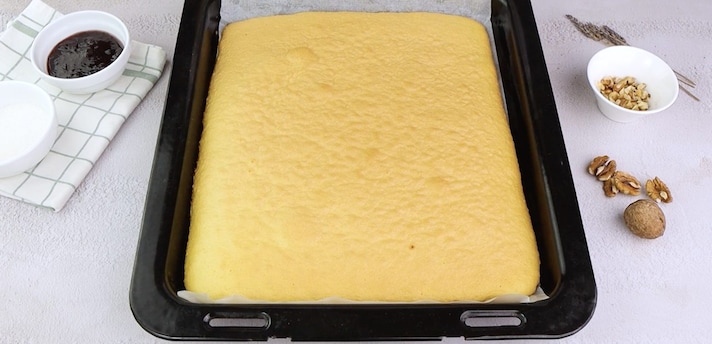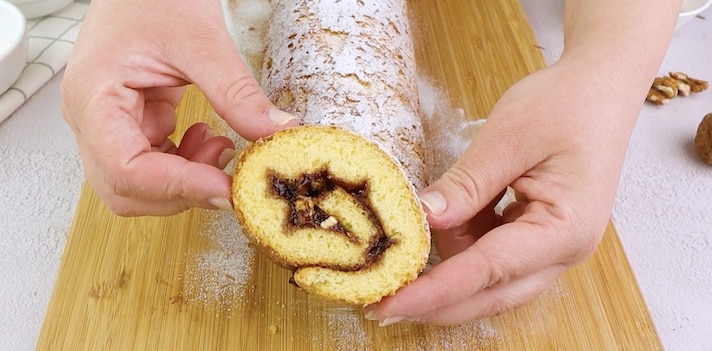
At first glance, a Swiss roll looks innocent—just a sponge cake wrapped around cream or jam, right? But ask any baker, and they’ll tell you this dessert is less about brute force and more about delicate choreography. One wrong move and your dreamy spiral becomes a flat, cracked tragedy. If you’ve ever wondered why yours never quite matches the glossy pictures online, chances are you’re making a few classic mistakes. Let’s roll through the top ones to avoid.
1. Underbaking or Overbaking the Sponge

Timing is everything. Too little time in the oven leaves you with a gooey, undercooked center that won’t hold its shape. Too much, and your sponge dries out faster than yesterday’s toast, practically begging to crack the second you touch it. Use a timer, test gently with your fingertip, and remember—light, springy, and golden is the sweet spot.
2. Skipping the Parchment Paper

If you’ve ever tried to free a sponge from its pan without parchment, you probably ended up with crumbs instead of cake. Swiss rolls demand a clean release, and parchment paper is non-negotiable. It’s your insurance policy against tearing, sticking, and despair. Grease, line, and breathe easy.
3. Ignoring the Cooling Window

There’s a narrow window between hot and stone cold when your sponge is pliable enough to roll without cracking. Ignore it, and you’ll either scorch your hands or end up with a rigid slab that refuses to bend. A brief cooling—just enough so it’s warm but not steaming—is your golden moment. Don’t miss it.
4. Rolling Without a Towel

Rolling a sponge bare is asking for disaster. Without a dusted towel to guide it, the sponge clings to itself, folds awkwardly, or worse, rips apart mid-roll. A soft, clean kitchen towel sprinkled with powdered sugar acts like training wheels—helping the cake remember its spiral without sticking.
5. Overloading the Filling

Yes, cream and jam are the soul of a Swiss roll, but moderation keeps things intact. Spread too much and you’ll have a dessert avalanche the moment you slice. Think of the filling as an accent, not the star—just enough to complement the sponge without overpowering it.
6. Forgetting to Trim the Edges

A neat roll starts with neat edges. Failing to trim the ends leaves you with uneven bulk and awkward seams. A quick slice with a sharp knife evens things out and makes the final swirl picture-perfect. After all, we eat with our eyes first, and a tidy roll sets the stage for every bite.
7. Skimping on the Chill Time

The fridge isn’t just for storage—it’s a structural step. A Swiss roll that hasn’t rested will unravel under the knife, smearing filling all over the place. Give it time to set, let the flavors mingle, and you’ll be rewarded with clean slices and a dessert that holds its poise.
8. Using the Wrong Pan Size

That pan at the back of your cupboard might not cut it. Too deep, and your sponge won’t cook evenly; too shallow, and it’ll spill over. Swiss rolls thrive in jelly roll pans—shallow, wide, and designed for quick, even baking. It’s one of those times when the right tool makes all the difference.
9. Neglecting Texture in the Sponge

Some bakers treat the sponge like any other cake, but Swiss rolls demand a fine, flexible crumb. Overmix the batter and you’ll end up with tough gluten strands; undermix and you’ll get pockets of flour. A light, even fold keeps the batter airy and smooth, ensuring a sponge that bends instead of breaks.
10. Slicing Too Soon

The final mistake comes at the end—impatience. Cutting into a Swiss roll before it’s properly set leads to jagged edges, cream oozing out, and a less-than-glamorous presentation. Wait the extra half hour. That first perfect slice, with its even swirl and intact layers, is worth every minute.
;Resize,width=767;)
